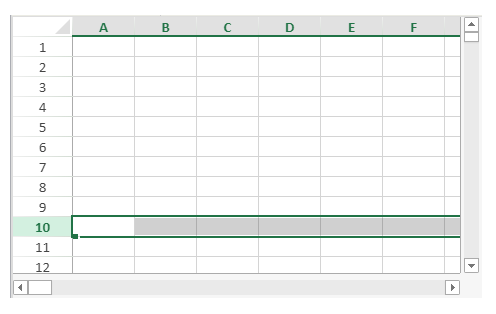4D v18
VP Row
- 4D View Pro Reference
-
- 4D View Pro Language
-
- About 4D View Pro commands
- Handling 4D View Pro areas
- 4D View Pro Constants
- VP ADD FORMULA NAME
- VP ADD RANGE NAME
- VP ADD SELECTION
- VP ADD STYLESHEET
- VP All
- VP Cell
- VP Cells
- VP Column
- VP Combine ranges
- VP Convert from 4D View
- VP Convert to pictureNew
- VP EXPORT DOCUMENTUpd
- VP Export to object
- VP FLUSH COMMANDS
- VP Font to object
- VP Get active cell
- VP Get cell style
- VP Get default style
- VP Get formula
- VP Get formula by name
- VP Get formulas
- VP Get names
- VP Get print infoNew
- VP Get selection
- VP Get stylesheet
- VP Get stylesheets
- VP Get value
- VP Get values
- VP IMPORT DOCUMENT
- VP IMPORT FROM OBJECT
- VP Name
- VP NEW DOCUMENT
- VP Object to font
- VP PRINTNew
- VP REMOVE NAME
- VP REMOVE STYLESHEET
- VP RESET SELECTION
- VP Row
- VP SET ACTIVE CELL
- VP SET ALLOWED METHODS
- VP SET BOOLEAN VALUE
- VP SET BORDER
- VP SET CELL STYLE
- VP SET DATE TIME VALUE
- VP SET DATE VALUE
- VP SET DEFAULT STYLE
- VP SET FIELD
- VP SET FORMULA
- VP SET FORMULAS
- VP SET NUM VALUE
- VP SET PRINT INFONew
- VP SET SELECTION
- VP SET TEXT VALUE
- VP SET TIME VALUE
- VP SET VALUE
- VP SET VALUES
- VP SHOW CELL
- 4D View Pro Range Object Properties
- 4D View Pro Print Attributes
- 4D View Pro Cell Format
- 4D View Pro Style Objects and Style Sheets
 VP Row
VP Row
| VP Row ( vpAreaName ; row {; rowCount {; sheet}} ) -> Function result | ||||||||
| Parameter | Type | Description | ||||||
| vpAreaName | Text |

|
4D View Pro area form object name | |||||
| row | Longint |

|
Row index | |||||
| rowCount | Longint |

|
Number of rows | |||||
| sheet | Longint |

|
Sheet index (current sheet if omitted) | |||||
| Function result | Object |

|
Range object of row(s) | |||||
The VP Row command returns a new range object referencing a specific row or rows.
In vpAreaName, pass the name of the 4D View Pro area. If you pass a name that does not exist, an error is returned.
The row parameter defines the first row of the row range. Pass the row index (counting begins at 0) in this parameter. If the range contains multiple rows, you should also use the optional rowCount parameter.
The optional rowCount parameter allows you to define the total number of rows of the range. rowCount must be greater than 0. If omitted, the value will be set to 1 by default.
In the optional sheet parameter, you can designate a specific spreadsheet where the range will be defined (counting begins at 0). If not specified, the current spreadsheet is used by default. You can explicitly select the current spreadsheet with the following constant:
| Constant | Type | Value | Comment |
| vk current sheet | Longint | -1 | Designates current sheet of the 4D View Pro area (default) |
You want to define a range object for the row shown below (on the current spreadsheet):

The code would be:
$row:=VP Row("ViewProArea";9) // row 10
4D View Pro Range Object Properties
VP All
VP Cell
VP Cells
VP Column
VP Combine ranges
VP Name
Product: 4D
Theme: 4D View Pro Language
Number:
9535
Created: 4D v17 R4
4D View Pro Reference ( 4D v18)









